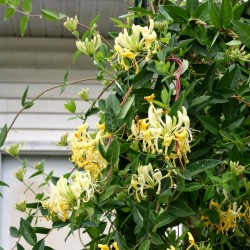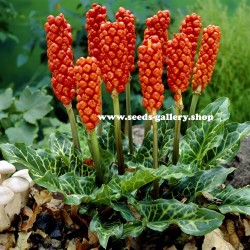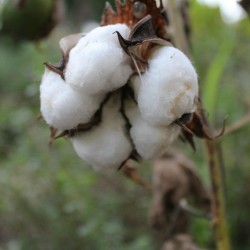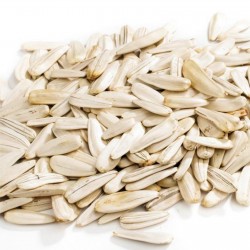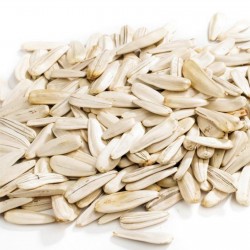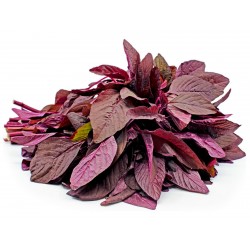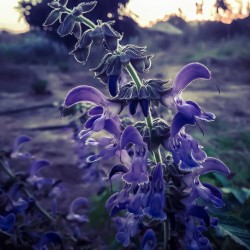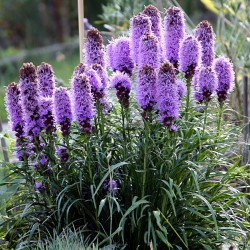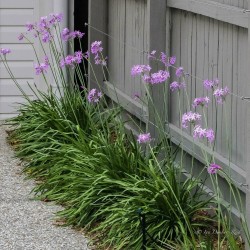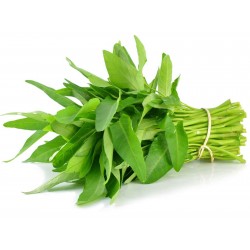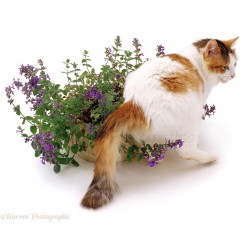
Catmint - Catnip Seeds...
Price
€1.95
SKU: MHS 88
Seeds Gallery Com,
5/
5
<!DOCTYPE html>
<html>
<head>
<meta http-equiv="Content-Type" content="text/html; charset=UTF-8" />
</head>
<body>
<h2><strong>Catmint - Catnip Seeds (Nepeta cataria)</strong></h2>
<h2><span style="color: #ff0000;"><strong>Price for Package of 170+- (0,1 g) seeds.</strong></span></h2>
<p>Nepeta cataria, commonly known as catnip, catswort, or catmint, is a species of the genus Nepeta in the family Lamiaceae, native to southern and eastern Europe, the Middle East, Central Asia, and parts of China. It is also widely naturalized in northern Europe, New Zealand, and North America. The common name catmint can also refer to the genus as a whole. The names catnip and catmint are derived from the intense attraction most cats have towards them.</p>
<p>Nepeta cataria is a short-lived herbaceous perennial, growing 50–100 cm (20–39 in) tall and wide. It resembles a typical mint family member in appearance by having the characteristic square stem that members of the Lamiaceae plant family have,[6] but with brown-green foliage. The coarse-toothed leaves are triangular to ovate.</p>
<p>The small bilabiate flowers can be white and finely spotted with pale purple or pink. They are showy and fragrant. The plant blooms from late spring through autumn.</p>
<p><strong>Uses</strong></p>
<p>The plant terpenoid nepetalactone is the main chemical constituent of the essential oil of Nepeta cataria. Nepetalactone can be extracted from catnip by steam distillation.</p>
<p><strong>Cultivation</strong></p>
<p>Nepeta cataria is cultivated as an ornamental plant for use in gardens. It is also grown for its attractant qualities to house cats and butterflies.</p>
<p>The plant is drought-tolerant and deer-resistant. It can be a repellent for certain insects, including aphids and squash bugs. Catnip is best grown in full sunlight and grows as a loosely branching, low perennial.</p>
<p>Varieties include Nepeta cataria var. citriodora (or N. cataria subsp. citriodora), or "lemon catnip".</p>
<p><strong>Attractant</strong></p>
<p>The compound iridodial, extracted from catnip oil, has been found to attract lacewings which eat aphids and mites.</p>
<p><strong>Repellent</strong></p>
<p>Nepetalactone is a mosquito and fly repellent. Oil isolated from catnip by steam distillation is a repellent against insects, in particular mosquitoes, cockroaches and termites. Research suggests that, while ten times more effective than DEET,[17] it is not as effective as a repellent when used on the skin when compared with DEET or SS220.</p>
<p><strong>Effect on humans</strong></p>
<p>Nepeta cataria can be brewed to produce a herbal tea. It is also used as a culinary herb for many dishes. Catnip can also be ingested through smoking the herb. It has only a negligible effect on relaxation, like other herbal cigarettes.</p>
<p>Catnip has a history of medicinal use for a variety of ailments. The plant has been consumed as a tea, juice, tincture, infusion or poultice, and has also been smoked. However, its medicinal use has fallen out of favor with the development of more commonplace pharmaceutical drugs.</p>
<p><strong>Effect on cats</strong></p>
<p>Catnip contains the feline attractant nepetalactone. Nepeta cataria (and some other species within the genus Nepeta) are known for their behavioral effects on the cat family, not only on domestic cats but also other species of cats.[21] Several tests showed that leopards, cougars, servals, and lynxes often reacted strongly to catnip in a manner similar to domestic cats and while lions and tigers can react strongly as well, they do not react as consistently.</p>
<p>With domestic cats, N. cataria is used as a recreational substance for pet cats' enjoyment, and catnip and catnip-laced products designed for use with domesticated cats are available to consumers. Common behaviors cats display when they sense the bruised leaves or stems of catnip are rubbing on the plant, rolling on the ground, pawing at it, licking it, and chewing it. Consuming much of the plant is followed by drooling, sleepiness, anxiety, leaping about and purring. Some growl, meow, scratch or bite at the hand holding it.[26][27] The main response period after exposure is generally between five and fifteen minutes, after which olfactory fatigue usually sets in.[28]:p.107</p>
<p>Cats detect nepetalactone through their olfactory epithelium, not through their vomeronasal organ.[29] At the olfactory epithelium, the nepetalactone binds to one or more olfactory receptors.</p>
<p>Not all cats are affected by catnip;[21] roughly 33% are not affected by the plant.[30][31] The behavior is hereditary.</p>
<p>Other plants that also have this effect on cats include valerian (Valeriana officinalis) and plants that contain actinidine.[32] Some domestic house cats that do not react to catnip may react to Tartarian honeysuckle in a manner similar to those that do.</p>
<h2><a href="https://www.wikihow.com/Grow-Catnip" target="_blank" title="Growing Catnip from Seeds" rel="noreferrer noopener"><strong> Growing Catnip from Seeds</strong></a></h2>
</body>
</html>
MHS 88





